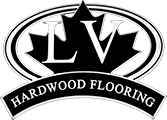The timeless appeal of herringbone flooring is why many homeowners want it in their spaces. The finer details of this flooring style offer a distinct charm and character. Plus, it often comes at a budget-friendly price.
But, the only way to enjoy the benefits of a herringbone wood floor is to lay it perfectly. And it’s a task that requires precision and careful attention to detail.
Here, we’ll discuss the important details of installing a herringbone wood floor in your space. Follow the steps in this blog, and your space will undergo the spectacular transaction a herringbone wood floor offers.
How to Lay a Herringbone Wood Floor: The Preparation Stage
A comprehensive preparation stage comes before you start to lay a herringbone wood floor. This preparation stage ensures the installation space and herringbone hardwood planks are in the best condition for the job.
Here are the steps to flow:
Select the Primary Flooring Material
You already know you want a herringbone flooring design on your floor. The next decision is the type of hardwood planks to make up that design. Here, you can either buy engineered or solid flooring planks for your herringbone design.
The decision is a function of your space and budget. Engineered hardwood planks often come prefinished and save you the extra work of a finishing step. And in comparison to solid hardwood planks, engineered alternatives are far easier to install.
That’s not to say a solid herringbone floor is not without its benefits. When you buy solid herringbone flooring, you’re giving yourself the opportunity to customize the final result fully. You can choose the perfect stain, finish and cut to compliment an existing decor.
And while they may cost more, solid herringbone wood floors are highly resilient. So you can expect the new herringbone floor to remain in great condition for the next few decades.
Acclimatize the Flooring
Often, we find homeowners with questions about how to lay herringbone floors because they want to avoid one key issue — warping. Unfortunately, with over a decade of experience in the flooring industry, we’ve come across horror stories of herringbone floors contracting and warping after you install them.
The way to avoid this issue is to ensure there’s an acclimatization step. Acclimatization in the flooring world means leaving the herringbone hardwood planks in the installation space for about 48 hours before laying them.
Installation Tools
Preparing every required tool beforehand lends credibility to your attempt to lay herringbone flooring. Distractions creep in when you have to stop working every other minute to find one tool or the other. And with distractions come mistakes that can affect the final result of herringbone flooring installation.
In short, any blog that answers how to lay a herringbone wood floor is incomplete without touching on the following tools:
- Circular saw
- Tape Meade
- Wood glue
- Nails
- Rubber mallet
- Painter’s tape
- Plywood router
- Chalk line
- Flooring strips
- Measuring tape
Prepare the Subfloor
Existing sub-flooring conditions in the installation space can determine how the finished floor looks. For example, sub-flooring in poor conditions can’t support the weight of herringbone floor planks without collapsing.
First, start by checking for a level subfloor. Ensuring a level subfloor is critical to floor arrangement when you start to lay the herringbone wood floor. Next up is checking for the floor’s moisture concentration. The best subfloors for a herringbone floor have a concentration of less than 5%.
You need to install one in situations where the space doesn’t have a suitable floorboard. Typically, either of these options is best for installing hardwood floors:
Concrete subfloor
A suitable concert floor must be devoid of adhesive and bitumen residue. Sometimes, you may need to cut, prune, and hack the topmost layer to ensure the concrete floor is primed and level enough for the installation step.
We also recommend using a self-levelling compound before you start to lay the herringbone floor. Ensure your compound’s base moisture content is less than 35% R.H.
Timber sub-floor
Timber sub-floors are ideal when the area in question already has a floorboard. Check that the floorboards are in good condition and replace them where necessary.
Ideal replacement floorboards should comprise thick, sturdy plywood. This characteristic is important because plywood offers a stable base for fitting engineered herringbone floors.

How to Lay Herringbone Floor
There are multiple ways to lay a herringbone floor. Hence, homeowners must choose an ideal installation method depending on the type of floor they want.
Here’s a quick look at the different ways to lay a herringbone floor.
The click method
This is the best way to lay herringbone floors if this is your first time going the DIY route. This method doesn’t require nails, screws or glue. However, it requires that you buy herringbone wood planks that support the click method.
The glue-down method
The second option in this guide is to lay herringbone flooring; the glue-down method requires complex technical skills.
It all starts with selecting the best type of glue for the job. It’s important to use glue that’s compatible with the wood and floor alike. Using the wrong glue for your floor can compromise the integrity of your final herringbone floor.
The next consideration is the moisture content of your existing sub-floor. Moisture levels should always remain under 9% if you’re using the glue-down method to lay your herringbone floor.
The next precaution is ensuring you’re working with a smooth, dry floor that has zero structural defects. The presence of any one of these factors can cause dampness that leads to floor swelling and warping.
Finally, the glue-down method of installing herringbone doors requires caution. Be sure to keep a close eye on how thick the glue you’re using is. Thick glue can result in uneven pressure distribution across your floor.
The screwing method
You can lay a herringbone floor in your home with screws. This installation method shares similarities with the nailing method. The only difference is you’ll be working with screws as opposed to nails. It can also work with battens, plywood, joist and floorboards.
Installing herringbone floors with this method requires driving screws into the board’s centre at a thirty to forty-degree angle. Then, you’ll need to fit the herringbone boards together and tighten the screw. Doing so results in a firm, tight herringbone floor.
The Nailing Method
This herringbone flooring installation method involves using a nail gun to push in the nails during installation. Typically, drive in the nails at an angle 45-degree to the board’s centre to ensure you get the best results. We also advise driving the nails in at a consistent pace to prevent subfloor damage.
The nailing method is best for laying a herringbone floor when the space has a plywood or batten subfloor. This installation method can also work on a concrete subfloor, but we recommend installing a 4mm plywood layer beforehand. It’s also better to use a foam underlay underneath the flooring’s topmost layer to prevent squeaking noises.
And in instances where you’re working with a batten subfloor, it’s best to introduce a buffer damp-proof later. Also, ensure the batten has a depth density of over 50mm. This depth density allows the floor to withstand all that hitting and nailing during installation.
Related Article: How Much Does Herringbone Hardwood Flooring Cost?
Steps to Laying a Herringbone Floor
With the preparation stage down and having settled on an installation method, the next step is how to lay the herringbone floor.
Before going further, you must know this is the stage with the most technicality to it. Here’s where you need to pay attention to ensure you’re left with the best results.
Mark and Measure the Working Area
The first step to laying a herringbone floor is measuring the working area. This includes the floor, centreline and working distance. Mark out the installation’s space centre line and draw two arcs to intersect at that point. Then, measure and chalk out a working line parallel to the centre line.
The parallel working line designates the working area that the herringbone design will cover. It’s there to help you track and ensure a seamless floor installation.
Cut Out the Slats
Inaccurate slat measurements can lead to a disorganized herringbone pattern. Therefore, pay extra attention to ensure each slat has a length that’s a multiple of its width. Perhaps more importantly, all slats for your herringbone floor must have the same length and width.
Take the time to measure and chalk the cutting points of each slat with a measuring tape. Then, carefully cut out each slat, making sure to cut out the tongues at each slat’s end.
Add Grooves to the Slats
Laying herringbone slates without grooves is harder because it makes for a difficult interlock. Grooves are there to set the depth of each router bit. We recommend cutting the end of each slat and checking that it properly interlocks with other slats.
Set the Nailing Plank
The nailing plank is a unique triangular board cut-out. You can cut the nailing plank with a working circular saw.
The nailing plank is the starting point for herringbone slat installation. Therefore, your nailing plank should have a centre line that aligns with the subfloor.
After double-checking this alignment, fasten it to your floor with a screwdriver and screw. Then, add grooves to the edges of your nailing plank.
Create a Slat Pattern
Now that you have a nailing plank, you can now add the first herringbone slate to its edge. Add one slat to each nailing plank’s edge making sure each tongue is facing the outer direction.
Another consideration is checking that both slats overlap on the nailing plank. You can go as far as using a flooring nailer to fasten the tongue edge of each slat to the existing subfloor.
You can nail the slats to the planks after checking they’re properly aligned. This point is the beginning of your herringbone laying sequence. After that, simply follow the preset course, laying out each slat, so it aligns with the one before it. Plus, only nail in the slats when you’re sure they align with overlapping ones.
Mark Overlaps at the End
A good finishing step is essential to laying out beautiful herringbone floors. That’s why marking out any slat overlaps at joining points is important. Be sure to apply tape on marked-out overlaps to prevent splintering and ensure straight cuts.
The next move is using a circular saw to carefully cut any overlap across the painter’s tape. Plus, you should also include a groove on the cut edge for farming purposes during the final finishing step.
For homeowners using the glue-down method to lay their herringbone floors, extra care helps you avoid stepping on the boards. It’s always better to wait until the freshly laid herringbone planks dry completely before stepping on them. You risk scattering the boards or, worse, slipping and sustaining an injury without this precaution.
Use small nails or pins to secure the planks for herringbone floors with a timber sub-floor. And if a wall or edge means a whole plank can’t fit, there’s no problem. Simply wait till the adhesive completely dries, and then cut out small plank sizes that’ll fit into that space.
Related Article: What’s The Difference Between Chevron And Herringbone Floors?

To Wrap It Up
Herringbone floors come with a unique appearance that’ll instantly transform your flooring. That’s why they’re the preferred choice for many homeowners in Ontario and beyond.
And when you know how to lay herringbone flooring correctly, you can save money on installation costs. Above we’ve discussed all you need to know about laying herringbone flooring. Simply follow the steps above to install your new herringbone floor like a professional.
Finally, do your due diligence to ensure you’re installing only the finest herringbone floor planks. Here at LV Flooring, we offer high-quality herringbone flooring planks that stand up to the test of time, quality and beauty. Look through our online collection today!


